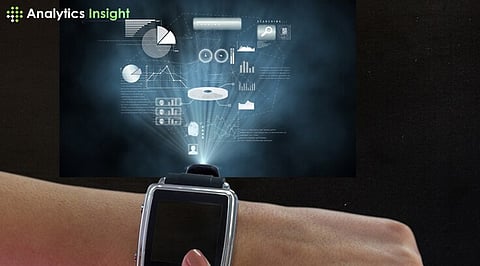

In this fast-moving era of wearable technology, smartwatches have found a place as indispensable companions for many. It may be appropriate to state that they were initially lauded for fitness tracking, but the devices are currently in the midst of another colossal metamorphosis. AI is to be the next big thing to hit smartwatches as we go forward into 2024, breaking the myth that only fitness tracking is the task performed by these watches. The present article goes into the newest AI integrations in smartwatches and how they are altering our engagement with the devices.
Another godly stride into AI-powered smartwatches has to do with enhanced health monitoring. The contemporary smartwatch is embedded with sensors to record a vast range of health data points, from monitoring the heart rate and sleep patterns to blood oxygen levels and stress indicators. AI algorithms analyze these data for providing personalized health insights and recommendations to the users.
This includes the detection of irregular heartbeats and notifies the user of such conditions before they escalate to critical conditions. For example, Apple and Fitbit companies use the AI technology of monitoring conditions like sleeper apnea and high blood pressure, which lacks no opportunity but provides a proactive approach toward the respective health issue. Smartwatches are indeed making for comprehensive health assistance by giving real-time advice and long-term follow-up on health.
This goes further toward simple fitness tracking, and with the acceptance of AI, smartwatches interpret what the user's fitness goals are. With the analysis of the user's activity data, AI can give out a workout plan specific to a user, fitting to maintain improved fitness levels and work efficiently set goals. This gives a personal touch by providing users with the most effective guidance to help one reach their fitness objectives.
For example, Fitbit Labs by Google is utilizing generative AI in the answering of questions regarding athletic performance and giving advice pertinent to users within specific contexts. Whether it's customization of the workout routine or tips on recovery, the AI in these smartwatches is fast becoming virtual personal trainers aiding users in their journey to optimal fitness.
Innovations in AI for smartwatches are also reaching into the area of mental health support. Nowadays, when everyone gained awareness of the phenomenon of mental health, wearable technology is the important area of checking and controlling mental health. AI algorithms based on user behavior go further to find preliminary signs of stress, anxiety, or depression because of changes in sleep, activity levels, and heart rate variability.
It can then provide users with appropriate insights and interventions in the form of guided breathing exercises, mindfulness reminders, or even recommendations to see professional help. Thus, AI is breaking barriers to mental health care by integrating mental health support into everyday wearables.
Another rather exciting development is the seamless integration of the AI clock a part of a much larger smart ecosystem. Smartwatches now go beyond being gadgets; they are growing to become part and parcel of interconnected smart homes and personal ecosystems. In other words, the AI features on these devices enable them to talk with other smart gadgets, which in turn boosts the operation and user experience.
For example, AI may enable a smartwatch to adjust a thermostat, manage smart lighting, or even control home security systems based on the user's behavior and habits. Herein lies another layer of integration that delivers an intuitive and seamless user experience in a smart home, of which the smartwatch is the central part and key to managing various components related to life.
The voice assistant has become a stereotype for smartwatches; with AI, they become smarter and more responsive. AI-powered voice assistants can comprehend complex inquiries and design the appropriate reply, thereby sometimes even predicting what a user might need based on terminology and preferences.
For example, Siri from Apple and Google's Assistant are getting smarter, allowing you to set a reminder to send a message and even control your home devices by issuing voice commands. Further, the integration of AI into voice assistants ensures not only correct but also more intuitive ways to make smartwatch interaction feel natural and become accelerative.
With the advancement of AI, the potential applications in this wearable technology are endless. Probably, future innovations will include more refined health diagnostics, advanced biometric security, and even predictive analytics driven by AI to tell one in advance if any health issues are forthcoming.
Moreover, with the infusion of AI into some of these emerging technologies, such as AR and VR, the opportunities provided to smartwatches of the future are virtually boundless. Just imagine a device on your wrist that could project AR overlays to help you navigate or produce immersive VR experiences in fitness and entertainment.
AI innovations push smartwatches even further ahead in capabilities far beyond fitness. Advanced health monitoring and personalized fitness coaching, mental health support, and effortless integration within a smart ecosystem it redefines the use of the device. Looking into the future, further evolution of AI will unlock even more exciting possibilities that make smartwatches an indispensable tool in managing our health, well-being, and lives.
